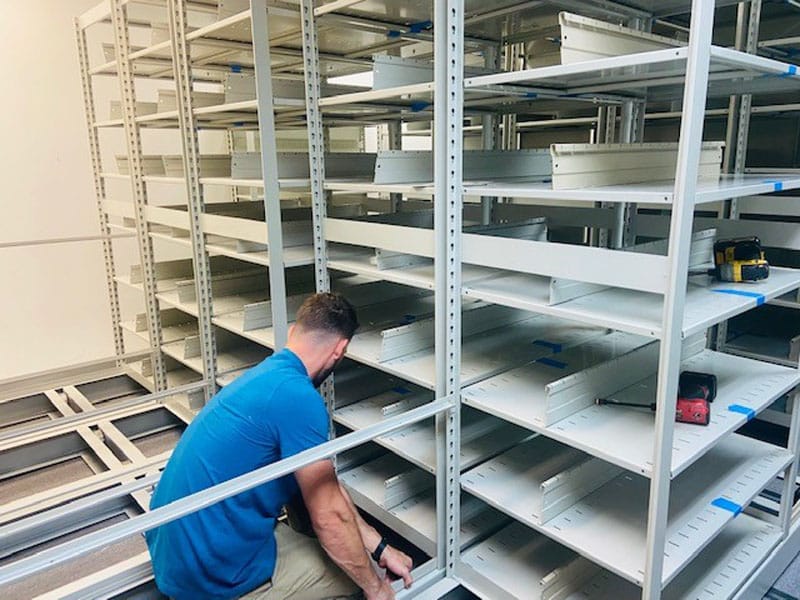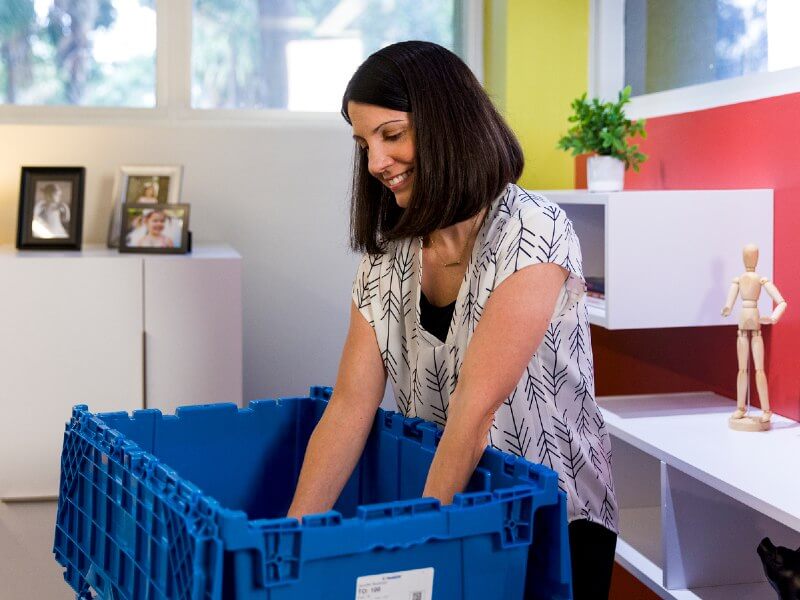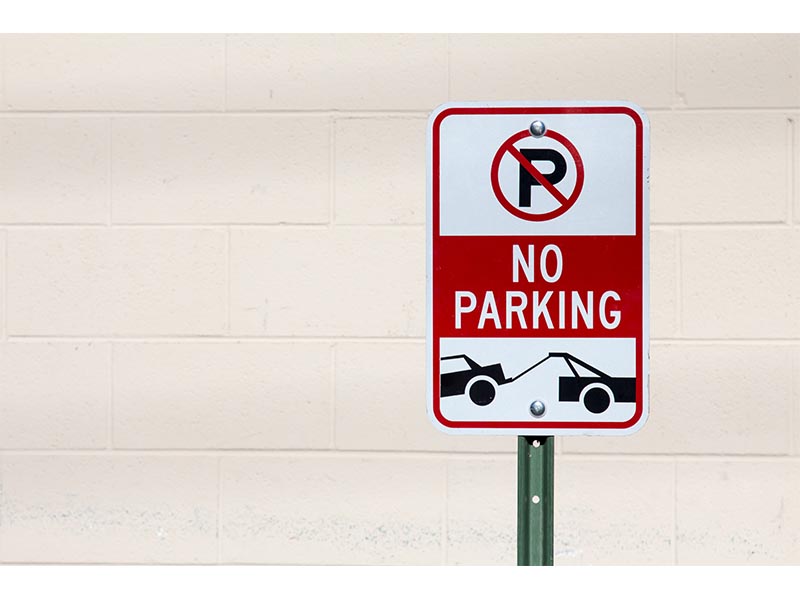Business Service
Content Type
Sort By
All

Checklist
Read More
Long-Distance Moving Toolkit

Case Study
Expert Handling of Specialized Merchandise for Amusement Attractions
Read More
Case Study
Student Relocation for University of Central Florida
Read More
Case Study
Commercial Relocation Services for The Villages Charter School
Read More
Case Study
Industrial Move for Goodyear Rubber Products Inc.
Read More
Checklist
Long-Distance Moving Toolkit
Read More
Blog
Mastering Hospitality Logistics Management
Read More
Blog
Global Relocation: 7 Ways to be Seen as a Strategic Business Contributor
Read More
Case Study
Wounded Warrior Project
Read More
Case Study
Florida Hotel Redesign
Read More
Case Study
Office Decommissioning & Equipment Relocation
Read More
Case Study
Office Decommissioning and Office Relocation for Prominent Tech Company
Read More
Blog
Identifying the Worst Moving Companies: The Red Flags to Look Out for and How to Protect Yourself
Read More
Blog
Maximizing Employee Relocation Benefits
Read More
Blog
The Ultimate Guide to Moving to Sarasota, FL
Read More
Blog
How Much Do Local Movers Cost? Factors To Consider
Read More
Blog
The Ultimate Guide to Moving to Winter Park, FL
Read More
Blog
Atlas Van Lines: What Does it Mean to be an Agent for Atlas?
Read More
Blog
10 Most Commonly Forgotten Tasks
Read More
Blog
Where is the Safest Place to Live in Jacksonville, FL?
Read More
Blog
Guide to Moving to St. Augustine, Florida
Read More
Blog
How Much Do Movers Cost?
Read More
Checklist
Healthcare Checklist
Read More
Case Study
Specialized Care for Multiple Healthcare Relocation Projects
Read More
Blog
How to Relocate a Lab Safely and Efficiently
Read More
Blog
Moving to Orlando on a Budget
Read More
Blog
7 Reasons to Hire a Local Jacksonville Moving Company
Read More
Blog
What is the Most Affordable Way to Move to Jacksonville, FL?
Read More
Blog
The Pros and Cons of Living in Jacksonville, FL
Read More
Blog
Moving to Jacksonville Beach, FL? Read our Ultimate Moving Guide
Read More
Blog
Things to Know Before Moving to Dallas-Ft. Worth
Read More
Blog
2023 Atlas Migration Patterns Study: Where is America Moving?
Read More
Checklist
Moving Out of State Checklist: A Valuable Resource
Read More
Blog
How to Communicate a Medical Office Relocation
Read More
Case Study
HQ and Data Center Move for TEA
Read More
Blog
Containerized Shipments: A Cost-Effective Alternative for Moving Household Goods
Read More
Blog
6 Steps to a Perfect Real Estate Referral Thank You Note
Read More
Blog
Landfill Avoidance for Businesses: How to Reduce Your Carbon Footprint
Read More
Blog
Capacity Constraints in the Household Goods Moving Industry
Read More
Blog
DIY Home Staging Tips to Sell Your Charlotte Home
Read More
Blog
DIY Home Staging: Selling Your Tampa Home
Read More
Blog
The Hidden Perils of Lump Sum Relocation
Read More
Blog
Best Jobs in Spain for Americans
Read More
Blog
Next Gen Marketing: How Young Realtors are Finding New Clients
Read More
Publication
E-Waste Guide
Read More
Blog
Industry Trends: Five Things Every International Corporate Mobility Manager Wants to Know Right Now
Read More
Blog
Living as an Expat in Spain
Read More
Blog
Top 5 Benefits of Recycling E-Waste
Read More
Blog
5 Top Questions Realtors Are Asking About Moving (and One They Should Be)
Read More
Case Study
Decommissioning and E-Waste Removal for Health Insurance Provider
Read More
Blog
How to Move Internationally in 2023
Read More
Blog
Shipping Household Goods and Sustainability Can Coexist with the Right Relocation Partner
Read More
Blog
Retro-commissioning vs. Energy Audit
Read More
Blog
4 Keys for Successful Employee Relocations During Peak Season
Read More
Blog
Reduce the Stress of Corporate Relocations with a Project Manager
Read More
Blog
Balancing Economic Uncertainty with Strong Relocation Benefits for Employee Retention
Read More
Blog
5 Ways to Fall in Love with Your New Home
Read More
Blog
3 Ways Modern Commercial Storage Can Benefit Your Business
Read More
Blog
When is the Best Time to Relocate to Jacksonville, FL?
Read More
Blog
Nine Things to Know Before Moving to Jacksonville, FL
Read More
Blog
Packing Tips: Dos and Don’ts for Long Distance Moves
Read More
Blog
Moving Study: Americans are Still Looking for Their Forever Home
Read More
Blog
Get the Best RFP Responses by Sharing the Right Insights from Procurement
Read More
Blog
Ten Reasons Why Moving to Jacksonville, FL is the Right Move for You
Read More
Blog
Nine Steps to Switch to a Hybrid Workplace
Read More
Blog
5 Photography and Videography Tips for Staging Your Home to Sell
Read More
Blog
Procurement’s Guide to Effectively Sourcing HHG Providers
Read More
Blog
Moving Employees’ Household Goods Internationally Supports Recruitment Efforts
Read More
Case Study
International Law Firm Consolidates Household Goods Moving Providers
Read More
Blog
Things to Know Before Moving to Alaska
Read More
Blog
Guide to Moving to Italy from the United States
Read More
Blog
Trusted Office Mover: How Suddath Supports a Hybrid Work Model
Read More
Blog
5 Ways to Celebrate National Homeownership Month
Read More
Blog
Set Employees Up for Success with Lump Sum Payments
Read More
Checklist
Warehouse and Industrial Move Checklist
Read More
Blog
Corporate Moving: What to Know About Employee Relocations
Read More
Blog
Duty of Care & Relocation: What HR Professionals Need to Know
Read More
Blog
How to Plan a Warehouse Move for Better Space Utilization
Read More
Blog
Duty of Care: Communicating with Your Employees During a Corporate Move
Read More
Blog
Ultimate Guide to Moving to Hawaii from the Mainland
Read More
Blog
3 Best Practices for Easy Facility Management
Read More
Blog
The 8 Best Things to Do in El Paso
Read More
Blog
The 6 Best Things to Do in San Antonio
Read More
Blog
8 Amazing Reasons to Move to Houston, Texas
Read More
Blog
Best Places to Live in Austin, TX
Read More
Blog
Minneapolis Moving on a Budget
Read More
Blog
7 of the Best Things to Do in Lubbock, Texas
Read More
Blog
Protect Employees and Your Business with Movers who Prioritize Data Security
Read More
Blog
Seamless in Seattle: 5 Steps for a Successful Office Move
Read More
Blog
Important Things to Know Before Moving to Minneapolis
Read More
Blog
Guide to Moving to Spain from the U.S.
Read More
Blog
Moving Overseas from Seattle? How to Hire the Right International Moving Company
Read More
Blog
Guide to Moving to France from the U.S.
Read More
Blog
7 Important Things to Know Before Moving into Your Los Angeles Apartment
Read More
Blog
Suddath Delivers NASA Space Craft Ahead of Launch
Read More
Case Study
Complete Hybrid Solution for Social Media Company
Read More
Blog
Suddath Supports U.S. Service Members in a Variety of Meaningful Ways
Read More
Blog
Point A to Point B: How International Moving Companies Transport Your Belongings
Read More
Checklist
Hybrid Workplace Roadmap
Read More
Blog
The Complete Guide to Moving to Germany From the USA
Read More
Blog
Borders Opening: Ramp Up Your International Moving Program Now
Read More
Blog
5 Things to Remember When Moving Overseas
Read More
Blog
When Is the Best Time for Your Local Fort Lauderdale Move?
Read More
Blog
Tips for Packing Fragile Items for Your Local Fort Lauderdale Move
Read More
Case Study
Office Relocation and Decommissioning for TN Marketing
Read More
Blog
Unique Housewarming Gifts for A New Home
Read More
Blog
What to Know About Insurance and Valuation When You Plan to Move Overseas
Read More
Blog
Moving to the UK from the USA? Here are some essentials you’ll want to know.
Read More
Blog
Common Long-Distance Moving Mistakes and How to Avoid Them
Read More
Blog
Things to Do After Your Local Tampa Move
Read More
Blog
Spot These Red Flags with Long-Distance Moving Companies
Read More
Blog
Ten Tips for Achieving Better Collaboration Across Your Relocation Partner Network
Read More
Blog
Transporting Your Car, Motorcycle or Boat to Your New State
Read More
Blog
Considering a DIY Local Move in Tampa? What to Know
Read More
Blog
Decluttering and Downsizing Makes Sense for a Long-Distance Move
Read More
Blog
The Price of Everything is Going Up – So How Does it Affect Home Buyers and Moving?
Read More
Blog
Labor Shortages and How You Can Offset the Impact During Your PCS Move
Read More
Blog
West Coast Port Congestion
Read More
Blog
Best Places for Expats in 2021 – And They Might Not Be Where You’d Think
Read More
Blog
Flexible Storage Options When Moving Across the Country
Read More
Blog
How to Pack for a Long-Distance Move
Read More
Video
How to Wrap a Wine Glass and a Wine Bottle
Read More
Blog
How Storage Services Can Make Your Miami Local Move Easier
Read More
Blog
7 Tips for a Smooth Move to Miami, FL
Read More
Blog
Your Essential Guide to Long-Distance Moving
Read More
Case Study
Suddath Conducts Seamless Group Move to and from Naval Station for IT Contractor
Read More
Case Study
Seamless Transition to Remote Work for Software Developer
Read More
Blog
How to Move Internationally in 2021
Read More
Blog
Crash or Boom: Predicting what the 2021 (and beyond) housing market will look like
Read More
Case Study
Temporary Relocation for Financial Institution
Read More
Blog
“If you could live anywhere, where would you live?” and other moving trends in 2021
Read More
Case Study
Office Move and Decommissioning for Urban League of Greater Atlanta
Read More
Blog
The Benefits and Security of Navex Global
Read More
Blog
Top 8 Questions Realtors Get About Home Moving
Read More
Blog
Your Complete Guide to the International Moving Process
Read More
Social Responsibility
Suddath Helps Dallas Children’s Advocacy Center Distribute School Supplies to Students
Read More
Blog
Does Your Supplier Have a Dedicated Account Manager?
Read More
Checklist
Back to Work Planner and Checklists
Read More
Blog
How to Return Employees to the Office in 2020
Read More
Blog
International Moving Terms You Should Know
Read More
Checklist
Office Moving Checklist
Read More
Blog
Frequently Asked Questions (and Answers) about COVID-19 and Your Move
Read More
Case Study
Social Distancing Solution for Medical Devices Manufacturer
Read More
Blog
How to Help Keep Employees Safe During COVID-19
Read More
Blog
Transitioning Dorms into Temporary Medical Facilities
Read More
Checklist
Moving with Kids Checklist
Read More
Blog
Ask a Mover: How can I prepare to move during COVID-19?
Read More
Checklist
Moving with Pets Checklist
Read More
Checklist
Moving Checklist
Read More
Blog
Project Managers for Employee Relocations: The True Cost
Read More
Case Study
VyStar Credit Union Headquarter Relocation
Read More
Blog
Moving Abroad: Steps for Shipping Internationally
Read More
Blog
The Most Common Moving Terms
Read More
Blog
Moving vs. Space Planning Solutions for your Growing Office
Read More
Blog
The Most Overlooked Steps in Handling Confidential Customer and Employee Records During a Move
Read More
Blog
Can Your Office Move Be Good for the Environment and for the Pocketbook?
Read More
Blog
How to Establish a Communication Plan for Your Office Move
Read More
Case Study
New York City School Relocation
Read More
Blog
7 Special Items You Can’t Trust Just Anyone to Move
Read More
Blog
Moving to Europe? You May Need More Tech Than Just a Plug Adapter
Read More
Blog
Relocating to Asia: Technology Details You Need to Know
Read More
Case Study
Moving the Oldest Newspaper Publication in Florida
Read More
Blog
2018 Year in Review
Read More
Blog
10 Items to Take with You During a Permanent Change of Station (PCS) Move
Read More
Blog
Behind the Scenes of a Domestic Military PCS
Read More
Blog
Behind the Scenes of an International Military Move
Read More
Blog
Moving with Kids: The Ultimate Guide to Staying Sane
Read More
Case Study
Patient Safety Crucial for Emory University Hospital
Read More
Case Study
Kimley-Horn Saves Nearly $25k During Office Move
Read More
Case Study
Moving Sensitive Court Materials with Special Care
Read More
Blog
Expat Life: The Complete Guide to Moving Overseas for your New Job
Read More
Blog
How to Get a Job and Move Abroad
Read More
Case Study
City of Portland Office Renovation
Read More
Blog
4 Ways to Have an Eco-Friendly Move
Read More
Blog
International Movers Q&A: 10 Things to do Before the Move
Read More
Blog
4 Things to Know About Moving When You Work from Home
Read More
Blog
Moving Tips: How to Self -Stage Your Home to Sell It Faster and at a Higher Price
Read More
Blog
4 Tips for Organizing a Household Move
Read More
Blog
International Moving: What to Consider When Looking for a Home
Read More
Blog
4 Easy Steps to Hiring the Best Cross-Country Mover
Read More
Blog
Interviewing Moving Companies? Make Sure They’re Full-Service
Read More
Blog
Moving Companies Q&A: What to Do with Leftover Boxes?
Read More
Blog
Downsizing Homes? Here’s What to Ask Moving Companies
Read More
Blog
International Movers Q&A: Tips for a Stress-Free Move
Read More
Blog
Moving Appliances Overseas: What You Should Know
Read More
Blog
Interviewing Local Moving Companies? Here’s What to Look For
Read More
Blog
Moving Companies Q&A: How Many Boxes Do I Need?
Read More
Case Study
Space Planning for Jacksonville State College Renovation
Read More
Blog
Long Distance Movers Q&A: Tips for Snowbirds
Read More
Blog
What Should I Look for When I’m Researching Moving Companies?
Read More
Blog
What to Expect: International Move Process Infographic
Read More
Blog
Long Distance Movers Q&A: What’s the Best Way to Move My Cars?
Read More
Blog
International Moving Companies Q & A on Moving with Young Children
Read More
Blog
International Movers Q&A: Why Is a Pre-Move Survey so Important?
Read More
Case Study
Space and Furniture Planning for Sports Merchandising Company
Read More
Blog
International Moving Companies Q&A: Are Moving Expenses Tax Deductible?
Read More
Blog
Long Distance Movers Q&A: Any Tips for Moving with Young Children?
Read More
Blog
Researching Moving Companies? Make Sure They Can Handle Unique Items
Read More
Blog
Researching Moving Companies? Ask About Packing
Read More
Blog
How Do International Moving Companies Select Their Suppliers
Read More
Case Study
Ingersoll Rand
Read More
Blog
2017 Year In Review
Read More
Blog
International Moving 101: What Documents Do You Need?
Read More
Checklist
Moving Checklist: Moving with Senior Citizens
Read More
Blog
Cross-Country Movers Q&A: How Much Does It Cost?
Read More
Blog
International Movers Q&A: What Do I Need to Know About Customs Regulations?
Read More
Blog
3 Questions to Ask Potential Moving Companies
Read More
Blog
U.S. Tax Reform and the Impact on Mobility: A Comparison Guide
Read More
Case Study
Industrial Move and Office Relocation for NOAA
Read More
Blog
How to Manage Pets During Your Move
Read More
Blog
Moving Tips: Biggest Packing Don’ts
Read More
Blog
Ask the Moving Company: What Do You Need to Know About Last-Minute Moves?
Read More
Blog
Ask the Moving Company: How to Make Your New Home Move in Ready
Read More
Blog
Ask the Moving Company: What Is a Moving Permit and When Do I Need One?
Read More
Blog
International Moving 101: Things to Consider When Moving Pets
Read More
Blog
After the Move: Tips for Throwing a Killer Housewarming Party
Read More
Blog
International Moving: 4 Tips for Learning a New Language Quickly
Read More
Blog
Cross-Country Moving Tips: How to Get to Know Your New City
Read More
Blog
International Moving Tips: How to Get to Know Your New Country
Read More
Blog
Ask the Moving Company: My Kitchen Is All Packed Up, Have Any Recipes?
Read More
Blog
After the Move: How to Make Your New House Feel like Home
Read More
Blog
What Does a Move Coordinator Do?
Read More
Case Study
Integrated Solution for ParkerVision Relocation
Read More
Blog
6 Things to Consider When Moving from an Apartment to a House
Read More
Blog
Impact of ELD Mandate on Moving Industry
Read More
Blog
Top 3 Things You Need to Do Before Moving Across the Country
Read More
Blog
Getting Ready to Move? Here’s How to Get an Accurate Quote
Read More
Case Study
Office Move for HighGround Advisors
Read More
Blog
Packing Hacks for a Smooth Move
Read More
Blog
Who Do You Need to Notify When You Move?
Read More
Blog
What to Expect When Moving
Read More
Blog
What Not to Pack When Moving
Read More
Blog
5 Tips When Moving to a Different Climate
Read More
Blog
How to Pack an Essentials Box
Read More
Blog
4 Places to Donate Your Used Belongings
Read More
Case Study
Leading US Home Loan Provider
Read More
Blog
3 Simple Ways to Decide Where to Move Next
Read More
Blog
Comparing Quotes from International Movers
Read More
Blog
6 Things You Should Dispose of Before Your Move
Read More
Case Study
Hospital and Research Center Relocation
Read More
Blog
A Few Important Considerations for Choosing an International Moving Company
Read More
Case Study
Relocation for Healthcare System
Read More
Case Study
Auto Dealer Consolidation and Relocation
Read More
Case Study
Electronic Manufacturer Warehouse Move
Read More
Case Study
German Prosthetics Company Relocation
Read More
Case Study
Lab Relocation for Inova Center for Personalized Health
Read More
Case Study
Office and Warehouse Relocation of a Fortune 100 Company
Read More
Case Study
Law Firm Relocation and Decommissioning
Read More
Checklist
Here’s Your Ultimate Moving Overseas Checklist
Read More
Case Study
Decommissioning for Financial Agency
Read More
Case Study
Space Planning and Furniture Design for CoventBridge
Read More
Case Study
The Wilshire Grand Hotel
Read More
Blog
4 Questions You Should Be Asking Your Local Movers
Read More
Blog
Top 5 Reasons to Move Overseas
Read More
Blog
Tips to Make Your Cross Country Move Feel like a Vacation
Read More
Checklist
The Checklist Every Person Should Use Before They Move
Read More
Blog
Is Your Workplace a Critical Environment?
Read More
Blog
3 Easy Ways to Kick-start your International Move
Read More
Blog
3 Simple Ways to Make Your Local Move Easier
Read More
Blog
3 Things Your Movers Should Provide You on Moving Day
Read More
Blog
4 Important Things to Look for in a Moving Company
Read More
Case Study
International Forest Products Company
Read More
Case Study
Global Automobile Manufacturer
Read More
Case Study
Large Auto Retailer
Read More
Case Study
Leading Transportation Supplier
Read More
Case Study
Leading Gourmet Sandwich Franchise
Read More
Case Study
Largest Law Firm in the Northwest
Read More
Case Study
County Government in Maryland
Read More
Case Study
Leading Resort in Anguilla
Read More
Blog
2016 Year In Review
Read More
Blog
6 Steps to an Easy Home Move
Read More
Case Study
Project Profile: U.S. Naval Hospital Guam
Read More
Case Study
North America’s Largest Residential and Small Business Alarm Services Company
Read More
Case Study
World’s Largest Security and Fire Protection Company
Read More
Case Study
World’s Largest Satellite Telecommunications Provider
Read More
Blog
3 Tips to Make Moving More Fun for Kids
Read More
Blog
5 Moving Tips for a Summer Relocation
Read More
Blog
Top 10 Most Forgotten Steps in a Home Move
Read More
Blog
5 Tips for Successful Office Space Planning
Read More
Blog
6 Storage and Moving Tips for Packing Electronics
Read More
Blog
5 Moving Tips for Packing Safely
Read More
Blog
4 Effects of the “Megavessel” Trend on Freight Services
Read More
Blog
Create a 5-Step Packing Timeline
Read More
Blog
4 Things to Consider When Choosing a Relocation Company
Read More
Blog
4 Ways to Get Organized for a Home Move
Read More
Blog
5 Critical Steps in Prepping for an Office Move
Read More
Blog
4 Things to Consider Before Moving Appliances
Read More
Blog
5 Ways Downsizing Helps Your Budget When Moving
Read More
Blog
The 2 Most Important Things to Know About Documentation When Moving
Read More
Blog
5 Fun Facts About Truckers
Read More
Blog
4 Ways Good Communication Improves Office Moves
Read More
Blog
4 Things to Consider for Office Space Planning Projects
Read More
Blog
6 Ways to Save Money on Your Relocation
Read More
Blog
6 Ways to Improve an International Corporate Relocation
Read More
Blog
3 Things Never to Pack to Keep You and Your Mover Safe
Read More
Blog
3 Major Customs Changes for International Moving
Read More
Blog
Office Move Checklist: Know Your Vendors
Read More
Blog
4 Essential Gadgets for Long Distance Drivers
Read More
Blog
3 Ways to Declutter Your Garage Before Moving
Read More
Blog
4 Things to Know About Shipping Valuation Coverage vs. Insurance
Read More
Blog
Benefits of Hiring Certified Office Moving Companies
Read More
Blog
How Do You Communicate with Employees About an Office Move?
Read More
Blog
Office Moving Companies: What to Ask the Lowest Bidder
Read More
Blog
8 Apps for Professional Van Operators
Read More
Blog
Planning an Office Move? 5 Critical Steps to Remember
Read More
Blog
Almost Everything You Need to Know About Movers’ Liability Coverage
Read More
Blog
Don’t Leave Millions on the Table (Or in a File Cabinet)
Read More
Blog
7 Ways to Stay Safe When Moving Heavy Items Upstairs
Read More
Blog
3 Ways Mobile Apps Can Help You Move
Read More
Blog
Panama Canal Doubles Capacity to Double Industry Impact
Read More
Blog
4 Tips for Moving into a Loft Apartment
Read More
Blog
13 DIY Halloween Moving Box Costume Ideas
Read More
Blog
The 6 Most Overlooked Parts of an Office Move
Read More
Blog
Office Furniture That Fits Your Space Should Also Fit Your Budget
Read More
Blog
5 Unexpected Moving Delays
Read More
Blog
Less Is More: Downsizing Your Home in 5 Steps
Read More
Blog
5 Signs of Disreputable Movers
Read More
Blog
The Difference Between Lump Sum, Allowance and Core Flex Employee Relocation Policies
Read More
Blog
The Pros and Cons of an Open Office Environment
Read More
Blog
5 Things to Consider When Choosing a Moving Date
Read More
Blog
6 Things to Know About Moving on a Holiday Weekend
Read More
Blog
5 Ways to Make Sure a Moving Company Is Legitimate
Read More
Blog
How to Reduce Downtime During a Corporate Relocation
Read More
Blog
6 Secrets of a Successful Office Move
Read More
Blog
8 Questions to Answer Before Moving Large Belongings Overseas
Read More
Blog
5 Tips for Moving in the Summer
Read More
Blog
Moving for Work? Here are 6 Things to Find out About Your New Home
Read More
Blog
4 Employee Relocation Services you Should Consider Outsourcing
Read More
Blog
Moving Both Your Office and Warehouse Environments? One Size Does Not Fit All
Read More
Blog
4 Things Technology Companies Must Know Before an Office or Data Center Relocation
Read More
Blog
The 6 Questions to Ask When Budgeting for a New Home
Read More
Blog
4 Tips for Moving in the Rain
Read More
Blog
Moving Tips: 7 Headaches to Avoid on Moving Day
Read More
Blog